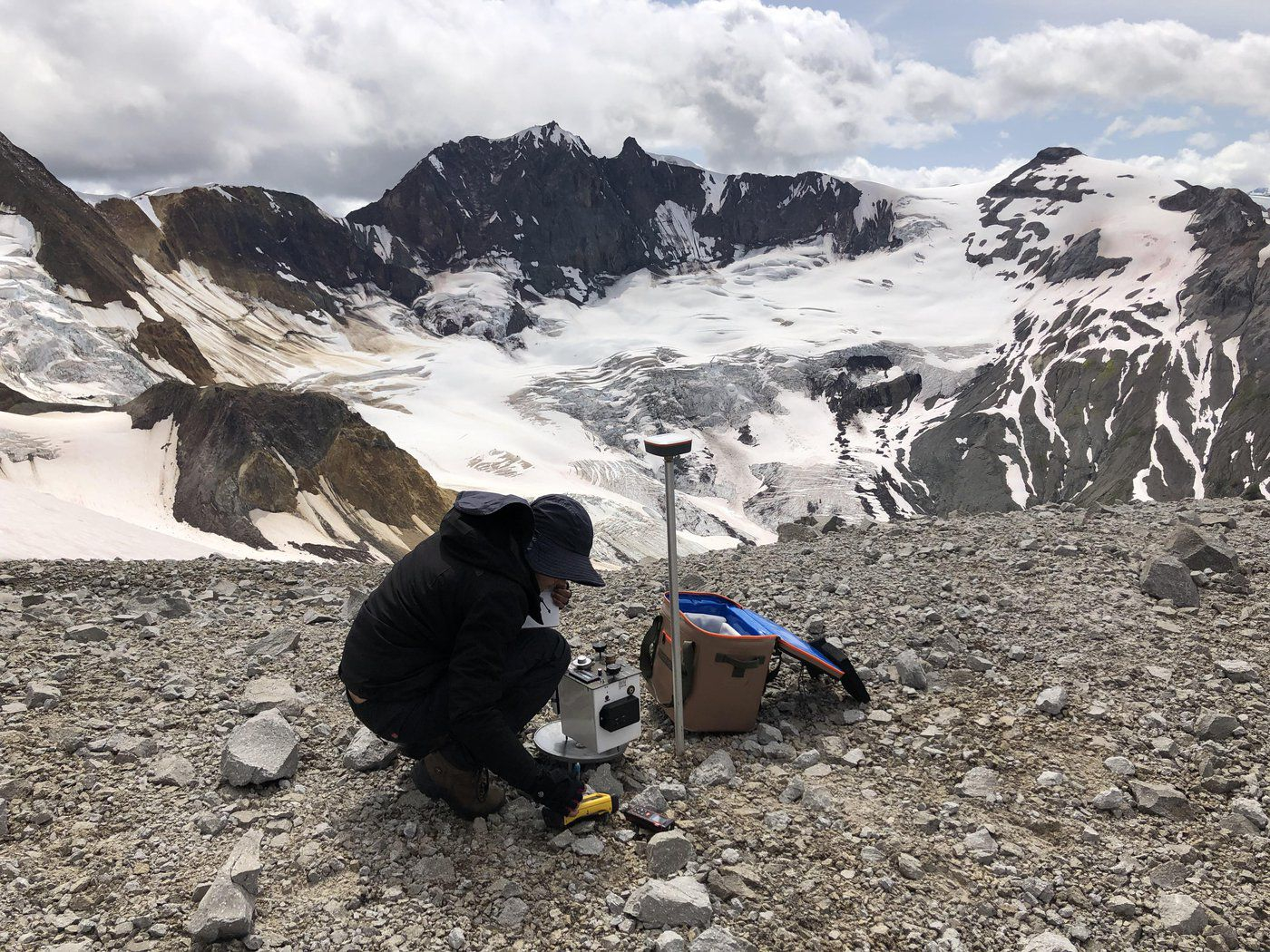Scientists are planning a "CAT scan" of a British Columbia volcano to help harness the underground heat that turns rock into magma for renewable energy.
"Canadians are often surprised to know there's volcanoes in the country," said Steve Grasby, a geologist with Natural Resources Canada. "But there are active volcanoes."
Grasby and his colleagues are headed about 24 kilometres west of Whistler, B.C., to Mount Cayley, part of the same mountain chain as well-known volcanic peaks such Mount St. Helens in Washington State.
Cayley's last lava flow was back in the 1700s, but plenty of heat remains. At nearby Mount Meager, a well drilled in the 1970s showed temperatures of 250 C at 1.5 kilometres depth.
That much heat at such a relatively shallow depth is a great opportunity for geothermal energy, said Grasby. For comparison, underground temperatures in Alberta — where some see geothermal potential in the energy wells dotting the province — only rise by 50 C for every kilometre of depth.
"In terms of temperature, it's a world-class resource," Grasby said.
But how do you tap it?
Geothermal plants generate power through the heat contained in underground water. Their success depends on sinking wells in just the right place to find the most water at the highest temperatures.
Grasby said because the work is so expensive, geothermal drillers need a 50 per cent success rate to be viable. Oil and gas drillers, he said, only need to be right one time out of seven.
He and his colleagues are trying to find ways to help drillers improve their hit rate by building a 3-D map of Cayley's innards — without using traditional tools such as seismic lines.
Part of the map will be drawn through basic geology. The team will analyze which rock types are present to find out how permeable or porous they are, or locating and diagramming fault systems that may hold hot water.
But they will also use methods such as examining how electromagnetic energy moves through the volcano. For example, when lightning strikes — even in a remote part of the world — the geologists can examine how that energy moves through the earth, where it is being absorbed and where it passes through.
"We have to go all around the volcano, so you're looking into it from all these different angles," Grasby said.
"You can start to develop a 3-D image of what's underground. By collecting these observations all around the volcano, you can start to see there's a magma chamber at 10 kilometres depth or a hot fluid-filled reservoir at two kilometres.
"You can think of it as a CAT scan."
That alpine scan could be used by drillers to determine exactly where to position themselves to get to the best heat resources.
"Our goal is to reduce that exploration risk," Grasby said. "You can't afford to drill a lot of dry holes."
Canada has a few geothermal projects underway.
Companies in Saskatchewan and B.C. have drilled wells and a couple more have plans. Alberta has recently joined B.C. in developing a regulatory regime for geothermal development.
But no geothermal wells are yet producing energy, making Canada the only country in the Pacific Rim of Fire not to do so.
The energy source could be a significant zero-carbon contributor to Canada's energy needs, Grasby said.
"Until someone sees a producing geothermal well, it's hard to believe it could be true. You need to see that first one," he said.
"It's not going to be the saving grace, but geothermal could be a big contributor, that's for sure."
This report by The Canadian Press was first published Aug. 21, 2022.
A request for some additional
A request for some additional nuance when reporting on geothermal (and perhaps any energy source).
As suggested in this informative piece, there is geothermal and there is geothermal. That is, the purposes to which geothermal energy can be readily applied depend on the qualities of the source in question. 250C heat, which can be extracted at a certain consistent rate is quite a different beast then, say, the heat available by drilling a well a few hundred feet down in a Kitsilano (or Nepean, or Torbay for that matter) backyard. Both are nonetheless useful.
I'd like to see a generally more holistic foundation/framework for energy reporting which reinforces for the reader, over time, the considerations of energy supply, energy uses, reduction of energy demand; just to pick three points of interest.
I agree. Energy is dominated
I agree. Energy is dominated by engineering and scientific research and reporting. The public is in need of good quality plain language interpretations of the reports and results. The NO has a couple of staff journos who excel at that. One can also refer to the Globe's Adam Radwanski for exemplary pieces on climate and energy.
https://www.theglobeandmail.com/authors/adam-radwanski/
Thomas Homer Dixon co-wrote an excellent in depth article on deep geothermal that, so far, Canada hasn't touched with a single drill bit yet, which is unfortunate for a country with a century of drilling experience. The PDF linked in the article by the Cascade Institute provides a deep dive for those who crave more than the Pabulum issued by wire copied CP articles (was that only a space filler, NO?)
https://cascadeinstitute.org/technical-paper/deep-geothermal-superpower/
The technical issues are not insurmountable. The NO-linked CP piece paints geothermal with one method: find a volcano and start drilling. There are many ways to tap geothermal heat. Distinguishing between using hot and very corrosive water from underground and a closed loop system using recirculated fresh, clean water is not even referenced. Deep geothermal vs shallow is not explained. Deep wells can be drilled anywhere and provide heat and power on demand. Using plasma jet drill bits below 10 km to melt the granite and basalt and form a glass-like shaft liner should be mentioned in articles like these that really need to be expanded.
The economics are important, but good quality R&D is always expensive, with really good returns often at the tail end. Governments and public utilities should make geothermal a priority for generous research grants and 100% of the actual project funding, not just cheap and easy candy for the climate PR data base and talking point crib sheets.





Comments